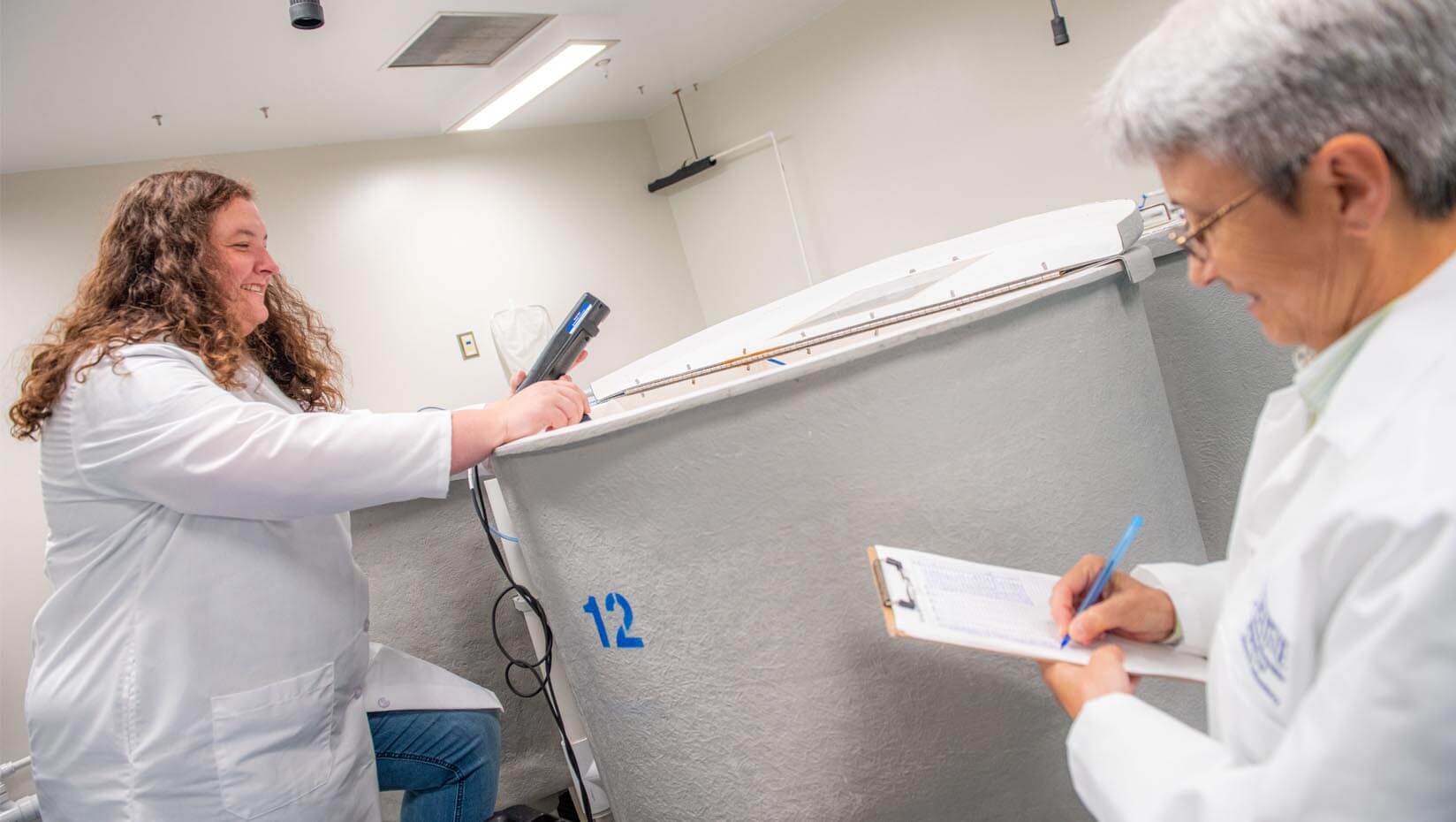
To help drive the growing state and national aquaculture industry, University of Maine scientists are using a half-million-dollar grant to develop finfish vaccines with a raw material from Maine’s wood pulp makers.
The vaccines would be made from nanocellulose fibers, which are wood cellulose that has been broken down to a scale of nanometers, or billionths of a meter.
The novel vaccines could have licensing and commercialization potential.
The U.S. Department of Agriculture’s National Institute of Food and Agriculture awarded a team of UMaine aquaculture and engineering experts $495,000 to investigate if novel nanocellulose vaccines protect Atlantic salmon against lethal pathogens, according to a news release.
The project will target vaccine development to combat infectious salmon anemia virus and vibrio ordalii, two globally significant Atlantic salmon pathogens.
Researchers hope the project will lay the groundwork for using nanocellulose in future vaccine formulations to protect against many other types of diseases impacting aquaculture and agriculture.
“Nanocellulose could potentially be a sustainable option for aquatic animal vaccines providing an economic solution for managing disease in commercially important species,” project lead Deborah Bouchard, director of the Aquaculture Research Institute at UMaine, said in the release.
Maine has had a farmed salmon industry since the 1970s.
Injectable vaccines
Injectable vaccines are considered the most effective way to protect aquacultured fish species. But current vaccines made with water- and oil-based additives are expensive to make and can cause side effects, such as decreased growth rates and pigmentation around the injection site.
Nanocellulose, a natural polymer found in the cell walls of wood and plants, may offer several advantages as a vaccine component, according to the scientists.
Nanocellulose is considered to be biocompatible, meaning it has no known harmful effects to tissue and is unlikely to cause cellular damage. Vaccines developed with nanocellulose may be less expensive to manufacture than oil-based ones, and could be easily modified to increase effectiveness and longevity of the medication without undesired side effects, according to the UMaine researchers.
Costly diseases
Disease among fish stocks can be costly for finfish producers.
The Food and Agriculture Organization of the United Nations reported in 2018 that the global aquaculture industry loses more than $6 billion per year to outbreaks.
As the aquaculture industry grows, so does the risk of disease, UMaine researchers said, prompting the demand for more effective and less expensive vaccines.
The infectious salmon anemia virus causes can kill up to 90% of a producer’s Atlantic salmon during an outbreak, according to researchers. Annually occurring outbreaks of salmon anemia have cost producers millions of dollars.
Vibrio ordalii causes vibriosis, which can also cause 90% mortality in salmon farms and cost the global aquaculture industry more than $1 billion in losses each year, researchers say.
“The market demand for Atlantic salmon continues to rise,” said Bouchard. “The future sustainability of the Atlantic salmon aquaculture industry will rely on our ability to maintain healthy cultured populations and effective vaccines are a critical tool for achieving this.”
Commercialization
Bouchard will be joined by researchers from the Aquaculture Research Institute and UMaine Chemical and Biomedical Engineering Department to develop the nanocellulose vaccines. The researchers include Michael Mason, professor of chemical and biomedical engineering, Ian Bricknell, a professor of aquaculture biology, and Sarah Turner, a research professional with UMaine Extension’s Aquatic Animal Health lab.
The team will create nanocellulose vaccine formulations, examine the antibody response of Atlantic salmon with the new vaccines and evaluate their effectiveness against the pathogens.
Researchers will conduct their work at the wet and dry labs at the UMaine Extension Diagnostic and Research Laboratory in Orono, at Mason’s wet chemistry and spectroscopy and imaging labs, and at the Forest Bioproducts Research Institute’s Process Development Center.
“This research capitalizes upon strengths of the University of Maine’s research expertise, facilities and industry partnerships in two complementary areas: aquaculture/fish health and cellulose nanomaterial science and engineering” said Bouchard.
Aquaculture Research Institute researchers plan to share the study results and develop licensing agreements and commercialization strategies through programs like the Small Business Technology Transfer program coordinated by the U.S. Small Business Administration.
"fish" - Google News
August 19, 2021 at 11:09PM
https://ift.tt/38dv5tP
A new vaccine, for fish? Using Maine wood fiber? UMaine researchers are on it - Mainebiz
"fish" - Google News
https://ift.tt/35JkYuc
https://ift.tt/3feFffJ
Bagikan Berita Ini















0 Response to "A new vaccine, for fish? Using Maine wood fiber? UMaine researchers are on it - Mainebiz"
Post a Comment